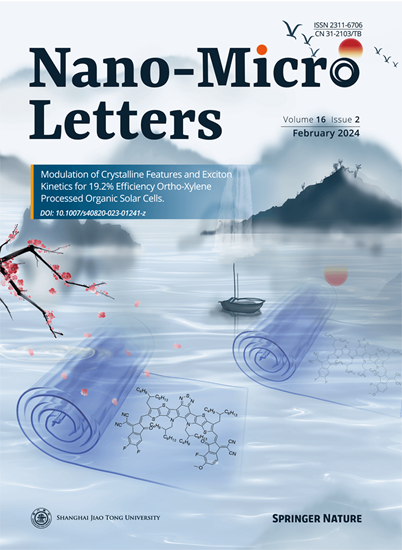高熵非晶态电解水催化剂:一个新的前沿
IF 36.3
1区 材料科学
Q1 Engineering
引用次数: 0
摘要
综述了高熵非晶态电化学水分解催化剂的研究进展。讨论了高熵非晶态材料独特的结构特征,如短程有序、高缺陷密度和柔性配位等与其电催化优势的关系。强调了多金属协同作用,非晶化效应和原位重构的机理见解,以指导合理的催化剂设计。本文章由计算机程序翻译,如有差异,请以英文原文为准。
High-Entropy Amorphous Catalysts for Water Electrolysis: A New Frontier
Highlights
-
This review comprehensively summarizes the recent progress of high-entropy amorphous catalysts for electrochemical water splitting.
-
The unique structural characteristics of high-entropy amorphous materials—such as short-range order, high defect density, and flexible coordination—are discussed in relation to their electrocatalytic advantages.
-
Mechanistic insights into multimetallic synergy, amorphization effect, and in-situ reconstruction are highlighted to guide rational catalyst design.
求助全文
通过发布文献求助,成功后即可免费获取论文全文。
去求助
来源期刊

Nano-Micro Letters
NANOSCIENCE & NANOTECHNOLOGY-MATERIALS SCIENCE, MULTIDISCIPLINARY
CiteScore
32.60
自引率
4.90%
发文量
981
审稿时长
1.1 months
期刊介绍:
Nano-Micro Letters is a peer-reviewed, international, interdisciplinary, and open-access journal published under the SpringerOpen brand.
Nano-Micro Letters focuses on the science, experiments, engineering, technologies, and applications of nano- or microscale structures and systems in various fields such as physics, chemistry, biology, material science, and pharmacy.It also explores the expanding interfaces between these fields.
Nano-Micro Letters particularly emphasizes the bottom-up approach in the length scale from nano to micro. This approach is crucial for achieving industrial applications in nanotechnology, as it involves the assembly, modification, and control of nanostructures on a microscale.
 求助内容:
求助内容: 应助结果提醒方式:
应助结果提醒方式:


